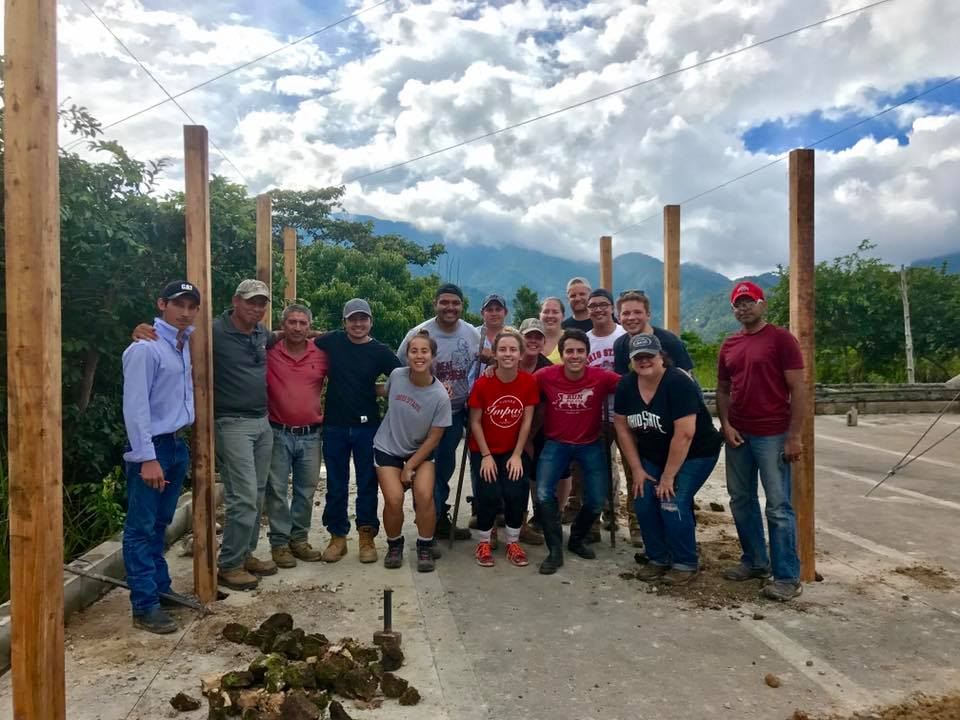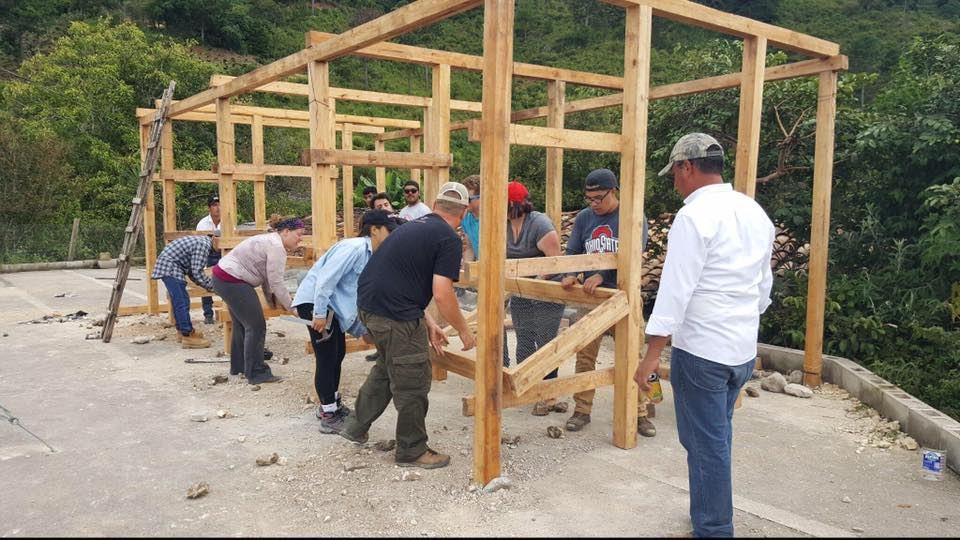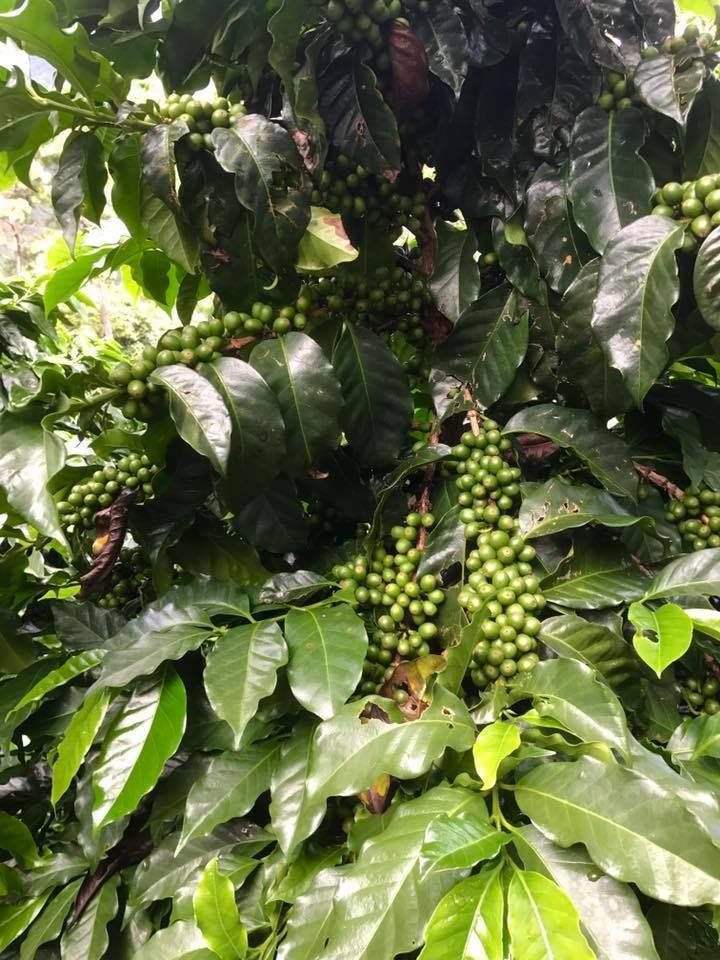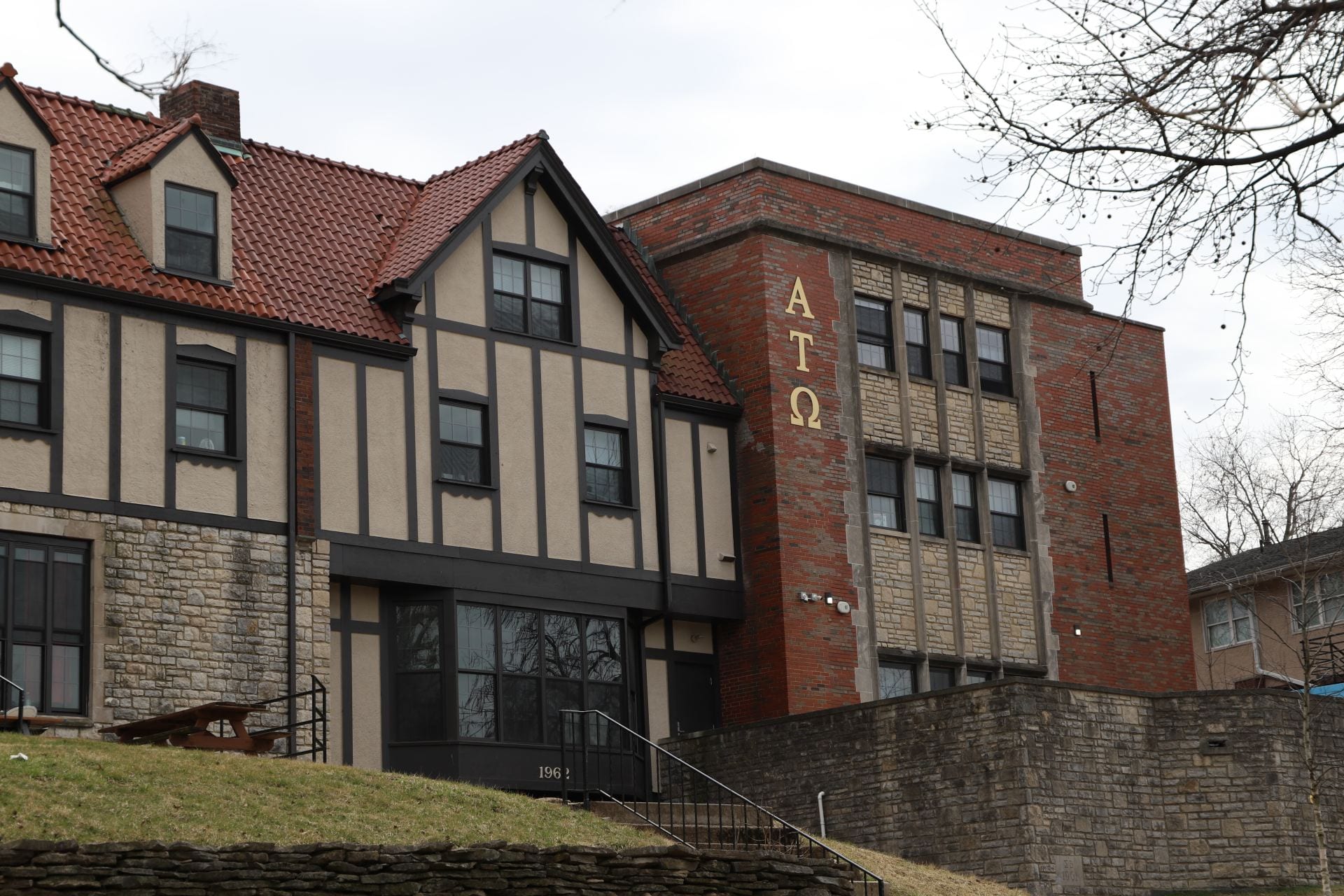
The Caravela staff poses with the Ohio State Buck-I-Serv group in La Palma, El Salvador on the first day of construction of a coffee drying bed. Credit: Shanti Lerner | For The Lantern
“The most important thing is the jobs we are creating,” Leonicio Guillen said in Spanish.
I heard him, but got distracted from the view behind him.
As I stood beneath the powdery blue sky stretching far beyond the vast expanse of green mountains and rolling valleys in the distance, I couldn’t help but fall in love with the beauty of El Salvador.
It was my second day in La Palma, El Salvador, and I had the wide eyes of a tourist. But as Guillen overlooked his coffee farm with admiration and hope, I realized he had more pressing everyday concerns. We weren’t there to admire a pristine view. We were there to do work for Guillen.
Guillen smiled at the group, thanking us in his soft spoken voice for what we were about to build for him.
His 103-acre coffee farm is situated in the mountains of La Palma. It’s his livelihood, as well as the community’s. Although Guillen and his farm are worlds away from the Ohio State community, a few adjustments to the quality of his coffee might bring him a little closer.
Like many other students at Ohio State, I am one of more than 4,000 people across the Columbus campus who drink Hubbard and Cravens coffee each day. Drinking coffee has been part of my daily routine yet I have never known where it actually comes from.

Ohio State staff and students put the final touches on Leonicio’s new coffee drying bed with help from the Hubbard and Cravens staff in La Palma, El Salvador. Credit: Shanti Lerner | For The Lantern
Over fall break, I went on a Buck-I-Serv trip to La Palma, El Salvador and visited Guillen, a potential Ohio State coffee source. I traveled with several Ohio State staff, five other students and two staff members from Hubbard and Cravens, an Indianapolis-based company that sells coffee for the university and is focused on direct trade coffee.
My group and I worked to help Guillen improve his cup score requirement, which would allow for him to sell his product on Ohio State’s Columbus campus. The Specialty Coffee Association of America scores coffee from 1-100. The cup score breaks down the different aspects of coffee such as acidity, aroma, sweetness, and body and gives consumers and farmers a basis of measure in knowing what a higher quality cup of coffee is. This past year, Guillen’s cup score was not able to meet Ohio State’s 85 cup score requirement.
So much goes into growing coffee: the nutrients in the soil, the amount of shade present around coffee trees, the kind of fertilizer being used and even the way coffee is dried after harvest.
The five-day trip was part of university initiatives to partner and create direct relationships with farmers and vendors locally and around the world, and putting a face to a popular product served on campus. The university sells coffee it sources from all over the world, including countries in Africa, South America and Central America.
We flew early-morning from Columbus to Atlanta, then took a second flight straight to San Salvador, the capital of El Salvador. The trip was about 12 hours of traveling. Once we arrived in the blistering heat of San Salvador we wasted no time. We got into two separate trucks and set forth on a two-hour journey to La Palma. La Palma has a population of just over 24,000 and is known for its coffee agriculture, handicrafts and colorful murals that cover building facades, houses and even vehicles.
The following day was our first full day of work. Once we arrived at the farm, Hugo Valle and Carlos Garcia, an agronomist and environmental engineer who work for a coffee exporting company called Caravela, welcomed us and gave us a short tour of the farm. Both Valle and Garcia work closely with Guillen to improve his coffee.

Coffee trees on Guillen’s 103-acre coffee farm in La Palma, El Salvador are ready to harvest in the spring. Credit: Shanti Lerner | For The Lantern
After our tour we went straight to work on our project: building a coffee-drying bed for Guillen’s coffee farm. He, like many other coffee farmers in his region, dries his coffee beans directly on the concrete ground. This practice often reflects harsh heat on the coffee and hinders it from drying properly, which, in turn, contributes to a lower cup score.
The drying bed is a wooden structure that looks like a bunk bed. It stands about 10 feet tall and is shaped like a house, comprised of six wooden surfaces covered in Malla or wire mesh.
We split up into teams and worked on different parts of the drying bed, we ate food together, chatted, had some laughs, and most importantly learned about coffee together.
Direct trade means not only paying farmers fair wages, but also eliminating the middlemen in the supply chain and allowing the university and even a student like me to create direct relationships with farmers.
“If our supply chain is based on a relationship, then it’s more than just a transaction,” Zia Ahmed, senior director of Dining Services at Ohio State and a staff trip leader, told me.
Although Guillen has yet to reach the ideal cup score of 85, his new coffee drying bed will hopefully help him achieve a higher cup score come harvest time in the spring. Then, the university might just be serving coffee straight from his farm. With this to look forward to, I and other Ohio State students will soon share a connection with Guillen in a single cup of coffee, making our favorite daily beverage more than just a tasty drink.


